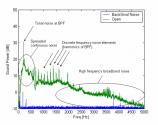There are quite a number of comments on the internet by insiders that claim natural circulation mode is rarely used nowadays. Apparently, pumps are very quiet nowadays. The catch is, though, a reactor that is capable of running on natural circulation would have optimized fluid flow paths. Having such fluid flow paths is a quietening measure on its own regardless of whether you are going to run the reactor in natural circulation mode or not. So bigger is probably better indeed. Size should allow more gradual curves and bigger pipes.5. natural circulation is important but I would also include that in an overall category of "nuclear reactor design quietening" which may require a "quieter reactor" to be larger in volume compared to a "louder reactor" of the same output
I would guess that everything in a contemporary sub that involves fluid flows would have a lot of fluid dynamics trickery ongoing to keep the pumps and flows quiet. Here is a trick for rotary pumps from the civilian world. Such suction diffusers are used on civilian nuclear reactors too.


Last edited:

